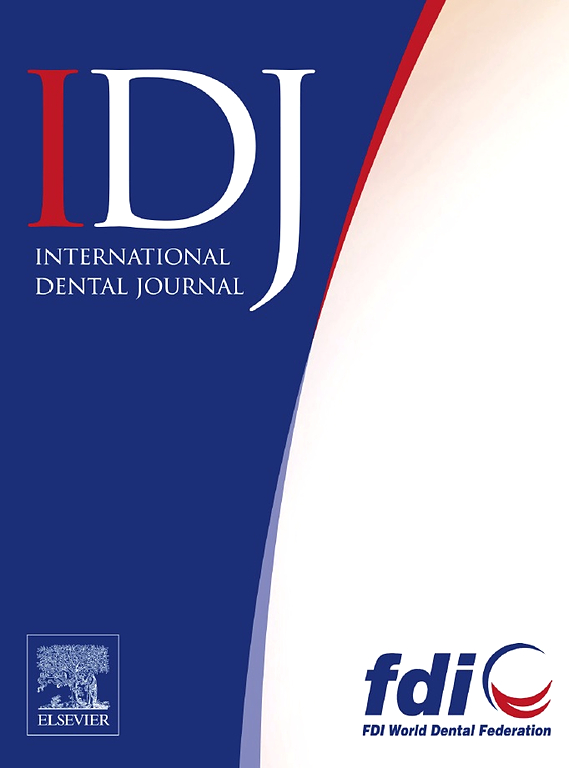sars在头颈部鳞状细胞癌中的作用及其作为诊断和预后生物标志物的潜力
IF 3.2
3区 医学
Q1 DENTISTRY, ORAL SURGERY & MEDICINE
引用次数: 0
摘要
目的当前或局部晚期头颈部鳞状细胞癌(HNSCC)具有侵袭性和对常规化疗的耐药性,预后较差。确定有效的生物标志物用于早期发现和预后评估对于提高HNSCC患者的治疗效果和降低死亡率至关重要。该研究旨在探讨seryl-tRNA合成酶(SARS1)作为HNSCC潜在的生物标志物和治疗靶点的作用,SARS1是蛋白质合成的关键酶。材料和方法在分析sars在HNSCC中的表达及其功能相关性时,综合生物信息学分析与病理样本评估相结合,同时采用实时PCR、Western blotting、免疫组织化学、细胞活力测定、伤口愈合试验和流式细胞术等方法。结果sars1在HNSCC组织中mRNA和蛋白水平均显著过表达(P <;. 05)。高SARS1表达与较差的总生存率相关(1.58 [1.18-2.11],P <;.05, OS),疾病特异性生存率(1.94 [1.28-2.43],P <;0.05, DSS),无进展生存期(1.76 [1.38-2.25],P <;. 05, PFS)。在HNSCC细胞系中敲低SARS1抑制细胞活力、迁移和集落形成,同时促进细胞凋亡。从机制上讲,SARS1激活了PI3K-AKT信号通路,这是肿瘤进展的关键调节因子。在HNSCC中,SARS1的表达与免疫细胞浸润无显著相关性。结论SARS1是HNSCC中一种新的致癌驱动因素,可作为不良预后的潜在生物标志物。其通过激活PI3K-AKT通路促进HNSCC进展的能力突出了其作为治疗靶点的潜力。需要进一步研究其在肿瘤免疫逃避中的作用,并验证其在临床应用中的实用性。本文章由计算机程序翻译,如有差异,请以英文原文为准。
The Role of SARS1 in Head and Neck Squamous Cell Carcinoma and its Potential as a Diagnostic and Prognostic Biomarker
Objective
Recurrent or locally advanced head and neck squamous cell carcinoma (HNSCC) carry a poor prognosis due to its aggressive invasiveness and resistance to conventional chemotherapy. Identifying effective biomarkers for early detection and prognostic assessment is crucial to enhance treatment efficacy and reduce mortality rates in HNSCC patients. This study aimed to investigate the role of seryl-tRNA synthetase (SARS1), a crucial enzyme in protein synthesis, as a potential biomarker and therapeutic target for HNSCC.
Materials and methods
In the analysis of SARS1 expression and its functional correlation in HNSCC, comprehensive bioinformatics analyses were integrated with pathological sample evaluation, alongside methods such as real-time PCR, Western blotting, immunohistochemistry, cell viability assays, wound-healing tests, and flow cytometry.
Results
SARS1 was significantly overexpressed in HNSCC tissues compared with normal tissues at both mRNA and protein levels (P < .05). High SARS1 expression was associated with poor overall survival (1.58 [1.18-2.11], P < .05, OS), disease-specific survival (1.94 [1.28-2.43], P < .05, DSS), and progression-free survival (1.76 [1.38-2.25], P < .05, PFS). Knockdown of SARS1 in HNSCC cell lines inhibited cell viability, migration, and colony formation while promoting apoptosis. Mechanistically, SARS1 activated the PI3K-AKT signalling pathway, which is a key regulator in tumour progression. SARS1 expression was not significantly associated with immune cell infiltration in HNSCC.
Conclusion
The findings suggest that SARS1 is a novel oncogenic driver in HNSCC and could serve as a potential biomarker for poor prognosis. Its ability to promote HNSCC progression through activation of the PI3K-AKT pathway highlights its potential as a therapeutic target. Further research is needed to explore its role in tumour immune evasion and validate its utility in clinical applications.
求助全文
通过发布文献求助,成功后即可免费获取论文全文。
去求助
来源期刊

International dental journal
医学-牙科与口腔外科
CiteScore
4.80
自引率
6.10%
发文量
159
审稿时长
63 days
期刊介绍:
The International Dental Journal features peer-reviewed, scientific articles relevant to international oral health issues, as well as practical, informative articles aimed at clinicians.
 求助内容:
求助内容: 应助结果提醒方式:
应助结果提醒方式:


